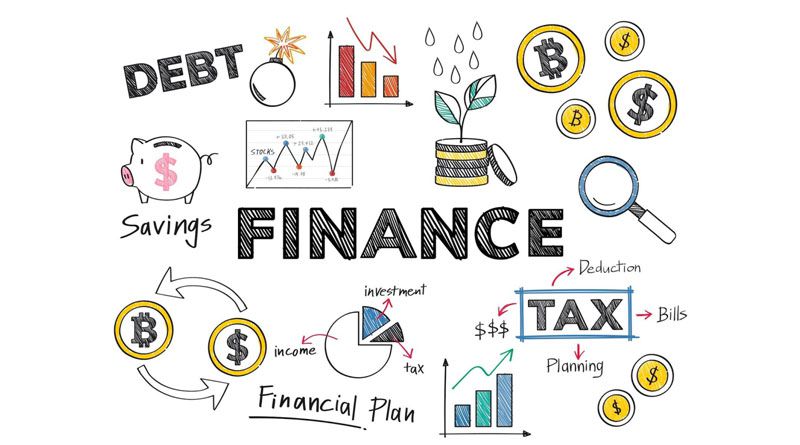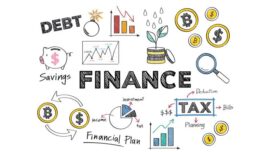
“Unlock the Power of Renewable Energy with Funding Sources!”
Introduction
Renewable energy is an increasingly important part of our energy mix, and there are a variety of funding sources available to help support the development and deployment of renewable energy technologies. From government grants and tax incentives to private investments and venture capital, there are a number of ways to finance renewable energy projects. This article will provide an overview of the different renewable energy funding sources available, as well as the pros and cons of each.
Exploring the Benefits of Renewable Energy Tax Credits
Renewable energy tax credits are an important tool for encouraging the development and use of renewable energy sources. These credits provide financial incentives for businesses and individuals to invest in renewable energy projects, helping to reduce the cost of renewable energy and making it more accessible. This article will explore the benefits of renewable energy tax credits and how they can help to promote the use of renewable energy.
Renewable energy tax credits are designed to encourage the development and use of renewable energy sources by providing financial incentives for businesses and individuals to invest in renewable energy projects. These credits can be used to offset the cost of renewable energy projects, making them more affordable and accessible. By reducing the cost of renewable energy, these credits can help to make renewable energy more competitive with traditional energy sources.
Renewable energy tax credits can also help to create jobs in the renewable energy sector. By providing financial incentives for businesses and individuals to invest in renewable energy projects, these credits can help to create new jobs in the renewable energy industry. This can help to stimulate economic growth and create new opportunities for employment.
In addition, renewable energy tax credits can help to reduce greenhouse gas emissions. By encouraging the use of renewable energy sources, these credits can help to reduce the amount of carbon dioxide and other greenhouse gases that are released into the atmosphere. This can help to reduce the effects of climate change and improve air quality.
Finally, renewable energy tax credits can help to promote energy independence. By encouraging the use of renewable energy sources, these credits can help to reduce the amount of energy that is imported from other countries. This can help to reduce the dependence on foreign sources of energy and promote energy independence.
Overall, renewable energy tax credits can provide a number of benefits for businesses and individuals. By providing financial incentives for businesses and individuals to invest in renewable energy projects, these credits can help to reduce the cost of renewable energy and make it more accessible. In addition, these credits can help to create jobs in the renewable energy sector, reduce greenhouse gas emissions, and promote energy independence.
Analyzing the Impact of Government Grants for Renewable Energy Projects
Government grants for renewable energy projects have become increasingly important in recent years as countries around the world strive to reduce their reliance on fossil fuels and transition to more sustainable sources of energy. These grants provide financial support to businesses and organizations that are developing renewable energy projects, helping to reduce the cost of these projects and make them more accessible to the public.
The impact of government grants for renewable energy projects can be seen in a variety of ways. First, these grants can help to reduce the cost of renewable energy projects, making them more affordable for businesses and organizations. This can lead to increased investment in renewable energy projects, which can help to create jobs and stimulate economic growth. Additionally, government grants can help to reduce the cost of renewable energy for consumers, making it more accessible and affordable.
Government grants can also help to encourage innovation in the renewable energy sector. By providing financial support to businesses and organizations, government grants can help to spur the development of new technologies and processes that can make renewable energy more efficient and cost-effective. This can lead to increased investment in renewable energy projects, which can help to reduce emissions and improve air quality.
Finally, government grants for renewable energy projects can help to create a more sustainable future. By providing financial support to businesses and organizations, government grants can help to reduce the environmental impact of renewable energy projects. This can help to reduce the amount of pollution and greenhouse gas emissions that are released into the atmosphere, helping to protect the environment and ensure a healthier future for generations to come.
Overall, government grants for renewable energy projects can have a significant impact on the economy, the environment, and the future of renewable energy. By providing financial support to businesses and organizations, government grants can help to reduce the cost of renewable energy projects, encourage innovation, and create a more sustainable future.
Examining the Role of Private Investment in Renewable Energy Development
The development of renewable energy sources has become increasingly important in recent years as the world seeks to reduce its reliance on fossil fuels and combat climate change. Private investment has played a key role in this development, providing the necessary capital to fund research and development, build infrastructure, and bring new technologies to market.
Private investment in renewable energy can take many forms, including venture capital, private equity, and public-private partnerships. Venture capital is typically used to fund early-stage research and development, while private equity is used to finance the construction of infrastructure and the commercialization of new technologies. Public-private partnerships are often used to leverage public funds with private capital to finance large-scale projects.
Private investment in renewable energy has grown significantly in recent years, driven by a combination of government incentives, technological advances, and increasing public awareness of the need to reduce emissions. In the United States, private investment in renewable energy has grown from $2.5 billion in 2004 to $44.1 billion in 2018.
Private investment has been particularly important in the development of solar and wind energy. Solar and wind energy are now the two largest sources of renewable energy in the United States, accounting for more than half of all renewable energy generation. Private investment has been critical in driving down the cost of solar and wind energy, making them increasingly competitive with traditional sources of energy.
Private investment has also been important in the development of other renewable energy sources, such as geothermal, biomass, and hydropower. Private investment has helped to fund research and development, build infrastructure, and bring new technologies to market.
Private investment in renewable energy is likely to continue to grow in the coming years as governments around the world seek to reduce emissions and combat climate change. Private investors are increasingly recognizing the potential of renewable energy and are investing in projects that have the potential to generate long-term returns.
In conclusion, private investment has played a critical role in the development of renewable energy sources. Private investment has helped to fund research and development, build infrastructure, and bring new technologies to market. As governments around the world seek to reduce emissions and combat climate change, private investment is likely to continue to play an important role in the development of renewable energy.
Investigating the Potential of Crowdfunding for Renewable Energy Projects
Crowdfunding has become an increasingly popular way to finance projects, from small businesses to large-scale renewable energy projects. With the rise of renewable energy sources, such as solar and wind, the potential of crowdfunding for renewable energy projects is worth exploring.
Crowdfunding is a form of financing that involves raising money from a large number of people, usually through an online platform. It is a relatively new concept, but it has already been used to fund a variety of projects, from small businesses to large-scale renewable energy projects.
The potential of crowdfunding for renewable energy projects is significant. It can provide access to capital that would otherwise be difficult to obtain, and it can also help to spread the risk of investing in renewable energy projects. Additionally, crowdfunding can help to create a sense of community and engagement around renewable energy projects, which can help to increase public support for them.
Crowdfunding can also be used to finance renewable energy projects in developing countries, where access to capital is often limited. This can help to increase access to renewable energy in these countries, which can have a positive impact on the environment and the economy.
Finally, crowdfunding can also be used to finance research and development of renewable energy technologies. This can help to accelerate the development of renewable energy sources, which can help to reduce our reliance on fossil fuels and reduce our carbon footprint.
Overall, crowdfunding has the potential to be a powerful tool for financing renewable energy projects. It can provide access to capital, spread the risk of investing, create a sense of community and engagement, and help to finance research and development. As such, it is worth exploring the potential of crowdfunding for renewable energy projects.
Exploring the Benefits of Renewable Energy Bonds
Renewable energy bonds are a type of financial instrument that can be used to finance the development of renewable energy projects. These bonds are issued by governments, corporations, and other entities to raise capital for renewable energy projects. They are typically long-term investments with a fixed interest rate and a fixed maturity date.
Renewable energy bonds offer a number of benefits to investors. First, they provide a steady stream of income. The interest rate on renewable energy bonds is typically higher than that of other types of bonds, making them attractive to investors looking for a reliable source of income.
Second, renewable energy bonds are a relatively safe investment. Since they are backed by the government or other entities, investors can be assured that their money is secure. Additionally, the interest rate on renewable energy bonds is typically fixed, meaning that investors can count on a consistent return on their investment.
Third, renewable energy bonds can help to reduce the environmental impact of energy production. By investing in renewable energy projects, investors can help to reduce the amount of carbon dioxide and other pollutants released into the atmosphere. This can help to reduce the effects of climate change and improve air quality.
Finally, renewable energy bonds can help to create jobs. By investing in renewable energy projects, investors can help to create jobs in the renewable energy sector. This can help to stimulate the economy and create new opportunities for people in the renewable energy industry.
Overall, renewable energy bonds offer a number of benefits to investors. They provide a steady stream of income, are relatively safe investments, can help to reduce the environmental impact of energy production, and can help to create jobs. For these reasons, renewable energy bonds are an attractive option for investors looking to diversify their portfolios.
Examining the Role of International Development Banks in Renewable Energy Funding
International development banks play a critical role in funding renewable energy projects around the world. These banks provide loans, grants, and other forms of financing to help countries transition to more sustainable energy sources. By doing so, they help to reduce global emissions and promote economic growth.
The World Bank is one of the largest international development banks and has been a major player in renewable energy funding. Since 2010, the World Bank has provided over $20 billion in financing for renewable energy projects. This includes investments in solar, wind, and geothermal energy, as well as energy efficiency projects. The World Bank also provides technical assistance to help countries develop renewable energy policies and regulations.
The Asian Development Bank (ADB) is another major international development bank that has been active in renewable energy funding. The ADB has provided over $7 billion in financing for renewable energy projects since 2010. This includes investments in solar, wind, and geothermal energy, as well as energy efficiency projects. The ADB also provides technical assistance to help countries develop renewable energy policies and regulations.
The European Investment Bank (EIB) is another major international development bank that has been active in renewable energy funding. The EIB has provided over $10 billion in financing for renewable energy projects since 2010. This includes investments in solar, wind, and geothermal energy, as well as energy efficiency projects. The EIB also provides technical assistance to help countries develop renewable energy policies and regulations.
In addition to the World Bank, ADB, and EIB, there are several other international development banks that are active in renewable energy funding. These include the African Development Bank, the Inter-American Development Bank, and the Islamic Development Bank. Each of these banks provides financing for renewable energy projects, as well as technical assistance to help countries develop renewable energy policies and regulations.
Overall, international development banks play a critical role in funding renewable energy projects around the world. By providing financing and technical assistance, these banks help to reduce global emissions and promote economic growth.
Analyzing the Impact of Carbon Pricing on Renewable Energy Investment
Carbon pricing is an increasingly popular policy tool used to reduce greenhouse gas emissions and promote the transition to a low-carbon economy. It works by placing a price on carbon emissions, either through a carbon tax or a cap-and-trade system, which incentivizes businesses and individuals to reduce their emissions. This policy has been shown to be effective in reducing emissions, but its impact on renewable energy investment is less clear.
This article will analyze the impact of carbon pricing on renewable energy investment. It will discuss the potential benefits and drawbacks of carbon pricing, as well as the potential implications for renewable energy investment. It will also examine the evidence from existing studies on the topic and draw conclusions about the effectiveness of carbon pricing in promoting renewable energy investment.
The primary benefit of carbon pricing is that it provides a financial incentive for businesses and individuals to reduce their emissions. By placing a price on carbon emissions, businesses and individuals are encouraged to invest in renewable energy sources, as they become more cost-competitive with traditional energy sources. This can lead to increased investment in renewable energy projects, which can help to reduce emissions and promote the transition to a low-carbon economy.
However, there are also potential drawbacks to carbon pricing. For example, it can be difficult to set the price of carbon emissions in a way that is both effective and equitable. Additionally, carbon pricing can be regressive, meaning that it disproportionately affects lower-income households. This can lead to increased energy costs for those households, which can be a barrier to renewable energy investment.
Despite these potential drawbacks, there is evidence that carbon pricing can be effective in promoting renewable energy investment. Studies have found that carbon pricing can lead to increased investment in renewable energy projects, as well as increased energy efficiency. Additionally, carbon pricing can lead to increased investment in research and development of renewable energy technologies, which can help to reduce emissions and promote the transition to a low-carbon economy.
In conclusion, carbon pricing can be an effective policy tool for promoting renewable energy investment. It provides a financial incentive for businesses and individuals to invest in renewable energy sources, and can lead to increased investment in research and development of renewable energy technologies. However, it is important to consider the potential drawbacks of carbon pricing, such as its regressive nature and the difficulty of setting an effective and equitable price.
Conclusion
In conclusion, renewable energy funding sources are an important part of the transition to a more sustainable future. With the right investments, renewable energy can become a viable and cost-effective alternative to traditional energy sources. Governments, businesses, and individuals all have a role to play in making this transition a reality. By investing in renewable energy, we can create a more sustainable future for generations to come.



0 comments
Write a comment